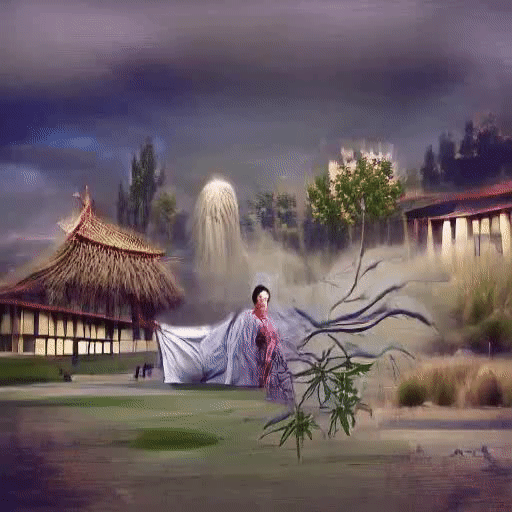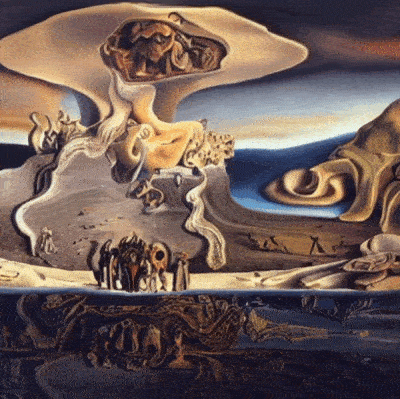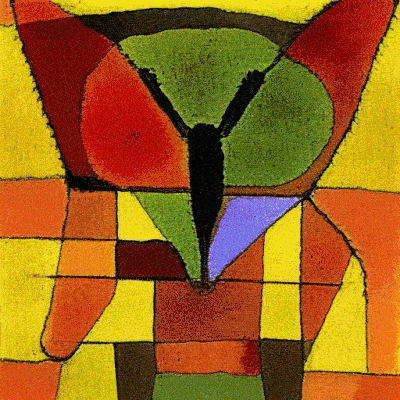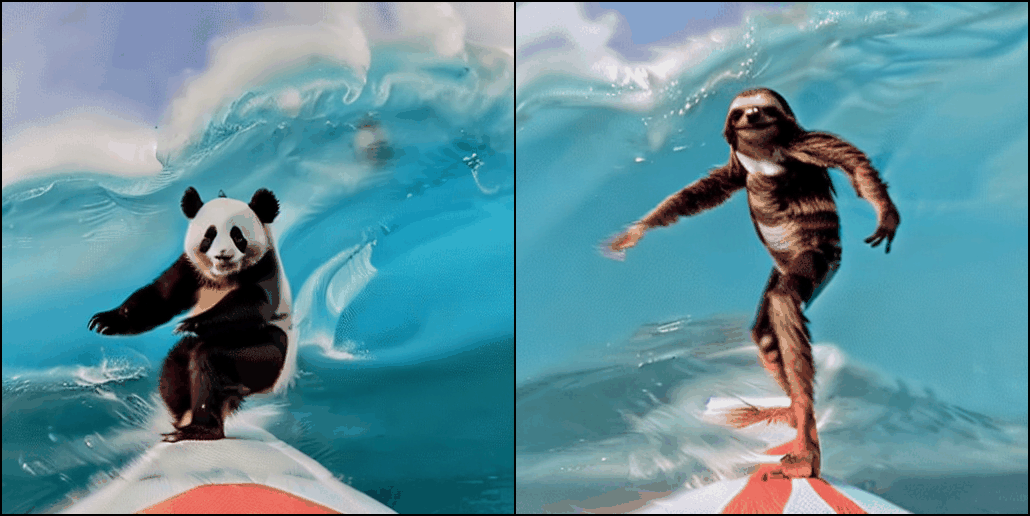adampi
Maintainer: pollinations

5

| Property | Value |
|---|---|
| Model Link | View on Replicate |
| API Spec | View on Replicate |
| Github Link | View on Github |
| Paper Link | View on Arxiv |
Get summaries of the top AI models delivered straight to your inbox:
Model overview
The adampi model, developed by the team at Pollinations, is a powerful AI tool that can create 3D photos from single in-the-wild 2D images. This model is based on the Adaptive Multiplane Images (AdaMPI) technique, which was recently published in the SIGGRAPH 2022 paper "Single-View View Synthesis in the Wild with Learned Adaptive Multiplane Images". The adampi model is capable of handling diverse scene layouts and producing high-quality 3D content from a single input image.
Model inputs and outputs
The adampi model takes a single 2D image as input and generates a 3D photo as output. This allows users to transform ordinary 2D photos into immersive 3D experiences, adding depth and perspective to the original image.
Inputs
- Image: A 2D image in standard image format (e.g. JPEG, PNG)
Outputs
- 3D Photo: A 3D representation of the input image, which can be viewed and interacted with from different perspectives.
Capabilities
The adampi model is designed to tackle the challenge of synthesizing novel views for in-the-wild photographs, where scenes can have complex 3D geometry. By leveraging the Adaptive Multiplane Images (AdaMPI) representation, the model is able to adjust the initial plane positions and predict depth-aware color and density for each plane, allowing it to produce high-quality 3D content from a single input image.
What can I use it for?
The adampi model can be used to create immersive 3D experiences from ordinary 2D photos, opening up new possibilities for photographers, content creators, and virtual reality applications. For example, you could use the model to transform family photos, travel snapshots, or artwork into 3D scenes that can be viewed and explored from different angles. This could enhance the viewing experience, add depth and perspective, and even enable new creative possibilities.
Things to try
One interesting aspect of the adampi model is its ability to handle diverse scene layouts in the wild. Try experimenting with a variety of input images, from landscapes and cityscapes to portraits and still lifes, and see how the model adapts to the different scene geometries. You could also explore the depth-aware color and density predictions, and how they contribute to the final 3D output.
This summary was produced with help from an AI and may contain inaccuracies - check out the links to read the original source documents!
Related Models

3d-photo-inpainting

5
The 3d-photo-inpainting model is a method for converting a single RGB-D input image into a 3D photo, which is a multi-layer representation for novel view synthesis that contains hallucinated color and depth structures in regions occluded in the original view. This model uses a Layered Depth Image with explicit pixel connectivity as the underlying representation, and presents a learning-based inpainting model that iteratively synthesizes new local color-and-depth content into the occluded region in a spatial context-aware manner. The resulting 3D photos can be efficiently rendered with motion parallax using standard graphics engines. This model is developed by the researchers Meng-Li Shih, Shih-Yang Su, Johannes Kopf, and Jia-Bin Huang and published at CVPR 2020. Similar models developed by the same maintainer, pollinations, include adampi, which creates 3D photos from single in-the-wild 2D images, and modnet, a deep learning approach to remove background and add new background image. Model inputs and outputs Inputs Image**: A single RGB-D input image Outputs Inpainted 3D mesh (optional) Rendered videos with different camera motions (zoom-in, swing, circle, dolly zoom-in) Capabilities The 3d-photo-inpainting model can generate a 3D photo from a single RGB-D input image, which contains hallucinated color and depth structures in regions occluded in the original view. The resulting 3D photos can be efficiently rendered with motion parallax, allowing for novel view synthesis. This model outperforms the state-of-the-art methods in terms of fewer artifacts. What can I use it for? The 3d-photo-inpainting model can be used to create immersive 3D experiences from single images, for applications such as virtual photography, 3D content creation, and interactive visualizations. The generated 3D photos can be used to provide a sense of depth and parallax, enhancing the user's perception and engagement with the content. Things to try One interesting thing to try with the 3d-photo-inpainting model is to use manually edited depth maps as input, instead of relying on the depth maps generated by the MiDaS model. This can allow for more control over the inpainting process and potentially lead to better results in certain scenarios.
Updated Invalid Date

modnet

519
modnet is a deep learning model developed by pollinations that can remove the background from images, videos, and live webcam footage, and replace it with a new background image. This model is similar to other background removal models like rembg-enhance, which uses ViTMatte to enhance background removal, and stable-diffusion, a powerful text-to-image diffusion model. However, modnet offers a more specialized solution for portrait matting in real-time under changing scenes. Model inputs and outputs modnet takes an image as input and outputs a new image with the background removed or replaced. The model can work on single images, folders of images, videos, and even live webcam footage. Inputs Image**: The input image can be a single image file or a video file. Outputs Image with background removed**: The model outputs an image with the background removed, ready to be used in various applications. Image with new background**: The model can also output an image with the original subject and a new background image. Capabilities modnet is capable of removing backgrounds from images, videos, and live webcam footage in real-time. The model can handle a variety of scenes and subjects, making it a versatile tool for applications such as virtual backgrounds, image editing, and video production. What can I use it for? modnet can be used for a variety of applications, such as: Virtual backgrounds**: Replace the background in video calls or live streams with a more professional or visually appealing image. Image editing**: Remove unwanted backgrounds from portrait photos, product images, or other visual content. Video production**: Create engaging video content by seamlessly replacing the background in video footage. Things to try Some interesting things to try with modnet include: Experimenting with different background images to see how they affect the final output. Combining modnet with other AI models like stable-diffusion to generate unique and creative backgrounds. Exploring how modnet performs on a variety of subjects and scenes, including landscapes, animals, and complex backgrounds.
Updated Invalid Date

stable-diffusion-dance

5
stable-diffusion-dance is an audio reactive version of the Stable Diffusion model, created by pollinations. It builds upon the original Stable Diffusion model, which is a latent text-to-image diffusion model capable of generating photo-realistic images from any text prompt. The stable-diffusion-dance variant adds the ability to react the generated images to input audio, creating an audiovisual experience. Model inputs and outputs The stable-diffusion-dance model takes in a text prompt, an optional audio file, and various parameters to control the generation process. The outputs are a series of generated images that are synchronized to the input audio. Inputs Prompts**: Text prompts that describe the desired image content, such as "a moth", "a killer dragonfly", or "Two fishes talking to each other in deep sea". Audio File**: An optional audio file that the generated images will be synchronized to. Batch Size**: The number of images to generate at once, up to 24. Frame Rate**: The frames per second for the generated video. Random Seed**: A seed value to ensure reproducibility of the generated images. Prompt Scale**: The influence of the text prompt on the generated images. Style Suffix**: An optional suffix to add to the prompt, to influence the artistic style. Audio Smoothing**: A factor to smooth the audio input. Diffusion Steps**: The number of diffusion steps to use, up to 30. Audio Noise Scale**: The scale of the audio influence on the image generation. Audio Loudness Type**: The type of audio loudness to use, either 'rms' or 'peak'. Frame Interpolation**: Whether to interpolate between frames for a smoother video. Outputs A series of generated images that are synchronized to the input audio. Capabilities The stable-diffusion-dance model builds on the impressive capabilities of the original Stable Diffusion model, allowing users to generate dynamic, audiovisual content. By combining the text-to-image generation abilities of Stable Diffusion with audio-reactive features, stable-diffusion-dance can create unique, expressive visuals that respond to the input audio in real-time. What can I use it for? The stable-diffusion-dance model can be used to create a variety of audiovisual experiences, from music visualizations and interactive art installations to dynamic background imagery for videos and presentations. The model's ability to generate images that closely match the input audio makes it a powerful tool for artists, musicians, and content creators looking to add an extra level of dynamism and interactivity to their work. Things to try One interesting application of the stable-diffusion-dance model could be to use it for live music performances, where the generated visuals would react and evolve in real-time to the music being played. Another idea could be to use the model to create dynamic, procedural backgrounds for video games or virtual environments, where the visuals would continuously change and adapt to the audio cues and gameplay.
Updated Invalid Date

tune-a-video

2
Tune-A-Video is an AI model developed by the team at Pollinations, known for creating innovative AI models like AMT, BARK, Music-Gen, and Lucid Sonic Dreams XL. Tune-A-Video is a one-shot tuning approach that allows users to fine-tune text-to-image diffusion models, like Stable Diffusion, for text-to-video generation. Model inputs and outputs Tune-A-Video takes in a source video, a source prompt describing the video, and target prompts that you want to change the video to. It then fine-tunes the text-to-image diffusion model to generate a new video matching the target prompts. The output is a video with the requested changes. Inputs Video**: The input video you want to modify Source Prompt**: A prompt describing the original video Target Prompts**: Prompts describing the desired changes to the video Outputs Output Video**: The modified video matching the target prompts Capabilities Tune-A-Video enables users to quickly adapt text-to-image models like Stable Diffusion for text-to-video generation with just a single example video. This allows for the creation of custom video content tailored to specific prompts, without the need for lengthy fine-tuning on large video datasets. What can I use it for? With Tune-A-Video, you can generate custom videos for a variety of applications, such as creating personalized content, developing educational materials, or producing marketing videos. The ability to fine-tune the model with a single example video makes it particularly useful for rapid prototyping and iterating on video ideas. Things to try Some interesting things to try with Tune-A-Video include: Generating videos of your favorite characters or objects in different scenarios Modifying existing videos to change the style, setting, or actions Experimenting with prompts to see how the model can transform the video in unique ways Combining Tune-A-Video with other AI models like BARK for audio-visual content creation By leveraging the power of one-shot tuning, Tune-A-Video opens up new possibilities for personalized and creative video generation.
Updated Invalid Date